In the realm of psychedelic substances, Amanita muscaria mushrooms represent as a captivating enigma, enamoring the curious minds of both ancient and modern psychedelic explorers.
Known by various names including the Fly Agaric, Fly Amanita, or simply Amanita, this striking red-and-white mushroom species has long held a place in human history, folklore, and shamanic practices.
Despite its intriguing allure, Amanita muscaria remains a lesser-explored subject compared to its more popular psychedelic counterparts like psilocybin-containing mushrooms or LSD.
In this comprehensive article, we embark on a journey to uncover the fascinating aspects of Amanita muscaria, diving deep into its biology, history, cultural significance, and potential psychoactive properties.
While many psychedelic enthusiasts seek profound experiences through substances like psilocybin or DMT, Amanita muscaria offers a unique and distinct pathway to altered states of consciousness.
Often described as "technically legal" due to its ambiguous legal status in various regions, Amanita muscaria occupies a complex space in the world of psychedelics.
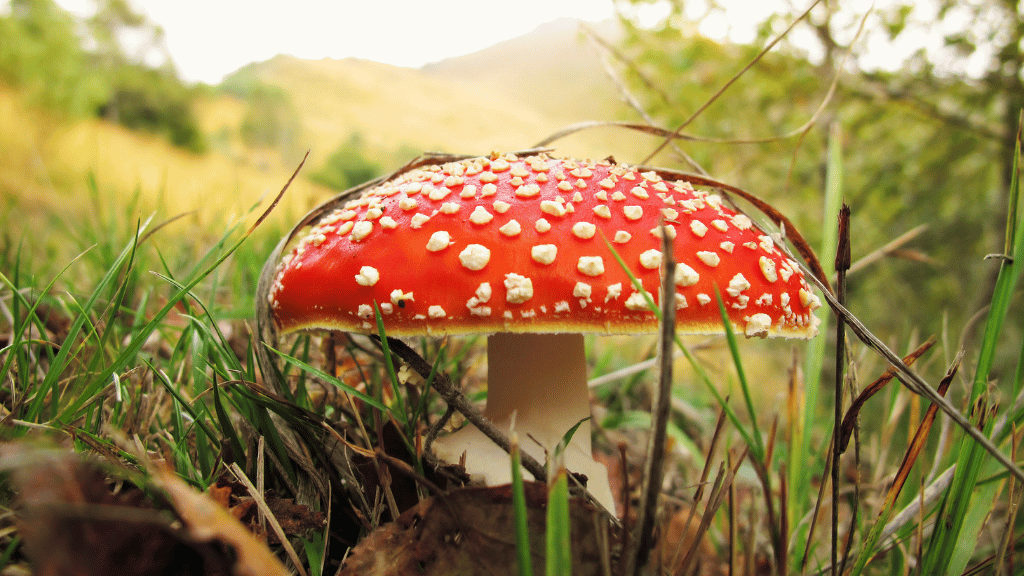
Their historical usage in indigenous rituals and religious ceremonies paints a picture of reverence and respect for its powers.
As the interest in exploring alternative states of consciousness grows, so does the desire to understand the potential benefits and risks associated with this iconic mushroom.
That's why the mushroom space is absolutely exploding with Amanita Muscaria gummies in every corner of the market.
However, a word of caution is warranted...
The Amanita muscaria's potency, varying chemical constituents, and potential toxic effects make its consumption far from a casual endeavor. So many of our readers are asking us:
What is this mushroom?
What makes it 'technically' legal?
How do its effects vary from other psychedelics?
Is it safe to use? What do I need to know before trying a gummy?
As we venture into the world of this mysterious mushroom, we must tread with mindfulness, respect, and a thirst for knowledge.
Join us as we uncover the secrets of Amanita muscaria, gaining insights from scientific research, ancient traditions, and contemporary experiences. This article aims to provide readers with a comprehensive understanding of the Fly Agaric mushroom, offering a balanced perspective that explores both its allure and potential risks.
Whether you seek to quench your curiosity or contemplate the implications of integrating Amanita muscaria into your own journey of self-discovery, this exploration is a gateway to a realm of natural psychedelia waiting to be discovered.
The History of Amanita Muscaria Mushrooms
The history of Amanita muscaria mushrooms stretches back thousands of years, with evidence suggesting its significance in various ancient cultures. Indigenous societies across Europe, Asia, and North America are believed to have incorporated this iconic mushroom into their spiritual and religious practices. Archaeological findings and cave paintings depicting Amanita muscaria in ancient rituals have sparked intrigue among historians and anthropologists, offering glimpses into the early human fascination with altered states of consciousness.
Shamanic practices and mystical experiences
Amanita muscaria's association with shamans and spiritual leaders is a recurrent theme in many indigenous cultures. Shamanic traditions often involved the consumption of this mushroom to induce trance-like states, facilitate visionary experiences, and establish communication with the spirit world. These rituals were conducted with great reverence and were seen as essential for healing, divination, and communal bonding.
According to the BBC, the shamans of the indigenous Sámi people of Lapland consumed small amounts of Amanita muscaria in their visionary rituals and drank urine from their reindeer, who eat the iconic red-and-white mushroom as part of their diet and metabolize its toxins without harm, excreting a fluid still full of psychoactive compounds but free from toxins. One of the known psychedelic effects of Amanita muscaria on humans is the sensation of flying, which might explain the origin of the myth about the man clad in red and white soaring through the sky on his reindeer-drawn sled, dispensing tokens of love to the world. SOURCE
Viking and siberian mythology and folklore
The striking appearance of Amanita muscaria, with its vivid red cap and white spots, has woven tales and myths throughout history. In Norse mythology, it is linked to the god Odin and his association with ecstatic practices.
"A translation of an 18th century essay is where it was first argued that A. muscaria’s observed physiological effects reported in certain settings indicate it could account for the behavioral and physiological characteristics of the Viking’s berserker-rages. Mark Hoffman and Carl Ruck expand on this hypothesis in historical, mythical and etymological evidence illustrating connections of A. muscaria with Odin’s warriors, who have assimilated the fierceness and power of a bear or wolf. The descriptions of the berserker and the features of the onset of their conditions such as sweating and notable increases in physical strength parallel the well-documented effects of fly agaric, as does the following state of exhaustion." SOURCE
In Siberian folklore, the mushroom is believed to be the gift of the gods and is connected to the World Tree, Yggdrasil. These myths offer a glimpse into the symbolic and mystical significance of the mushroom in different cultural contexts.
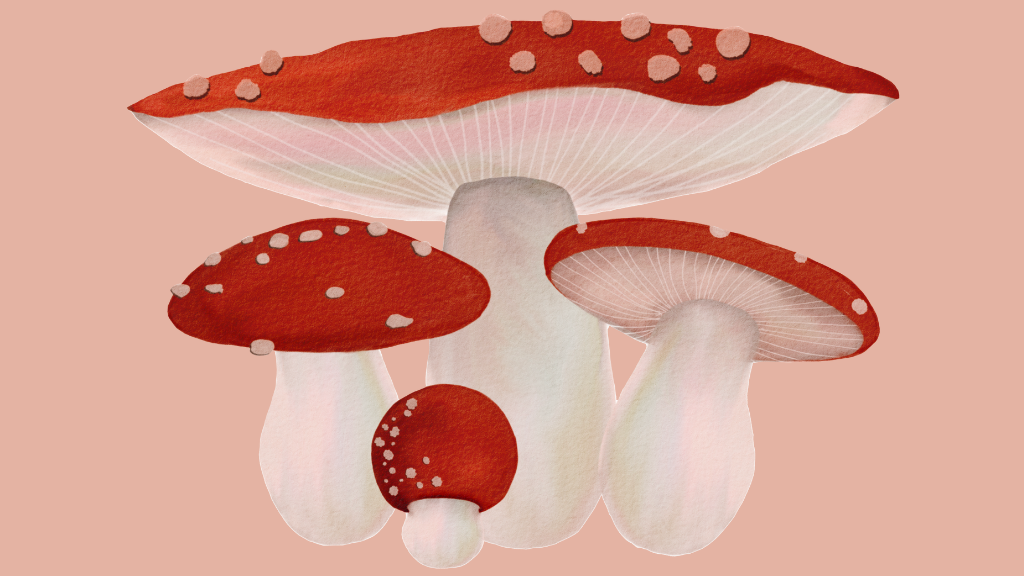
The exploration and documentation of indigenous practices in the 19th and 20th centuries shed more light on the historical use of Amanita muscaria mushrooms. Early ethnobotanists, such as R. Gordon Wasson, studied the use of this mushroom in Siberian shamanism and contributed to its growing fascination in the West. Today, as interest in psychedelic substances resurges, Amanita muscaria has become the subject of renewed attention and experimentation in contemporary contexts.
Amanita muscaria in European history:
During the medieval period, Amanita muscaria made appearances in European art, literature, and religious iconography. It was often depicted as a magical or mystical entity, adding to its allure and enigma. Historical records also suggest that some European cultures used the mushroom for various medicinal purposes and as an intoxicant during festive celebrations.
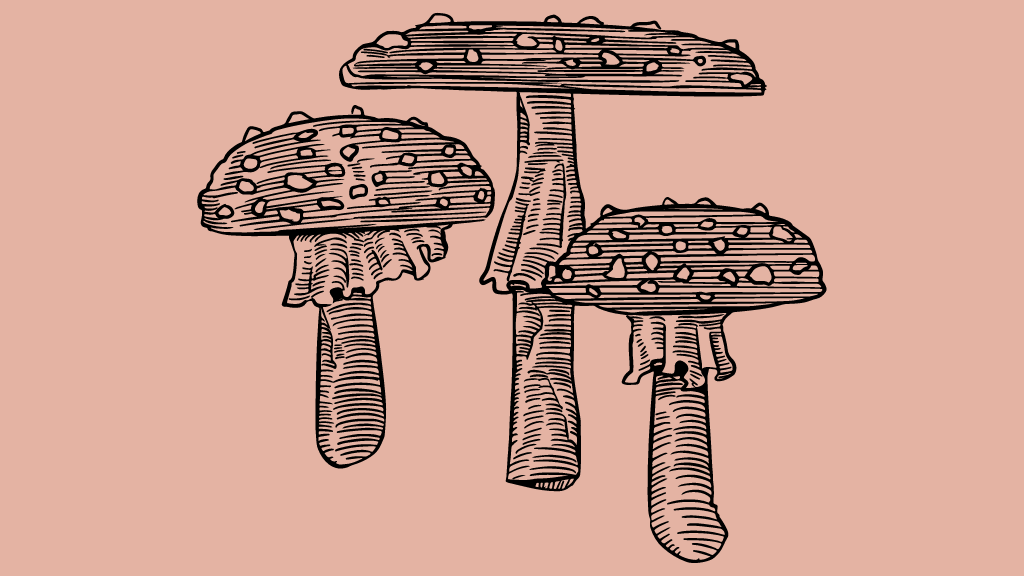
Ethnobotanical records and modern rediscovery:
The exploration and documentation of indigenous practices in the 19th and 20th centuries shed more light on the historical use of Amanita muscaria mushrooms. Early ethnobotanists, such as R. Gordon Wasson, studied the use of this mushroom in Siberian shamanism and contributed to its growing fascination in the West. T
oday, as interest in psychedelic substances resurges, Amanita muscaria has become the subject of renewed attention and experimentation in contemporary contexts.
Amanita Muscaria in popular culture:
The iconic appearance of Amanita muscaria has also earned it a place in modern popular culture. Its depiction in children's stories, such as Lewis Carroll's "Alice's Adventures in Wonderland," has added to the mushroom's whimsical image.
Moreover, references to Amanita muscaria can be found in music, art, and movies, further perpetuating its mythical charm.
As we trace the rich history of Amanita muscaria mushrooms, we gain a deeper understanding of its integral role in shaping human spirituality, art, and cultural practices.
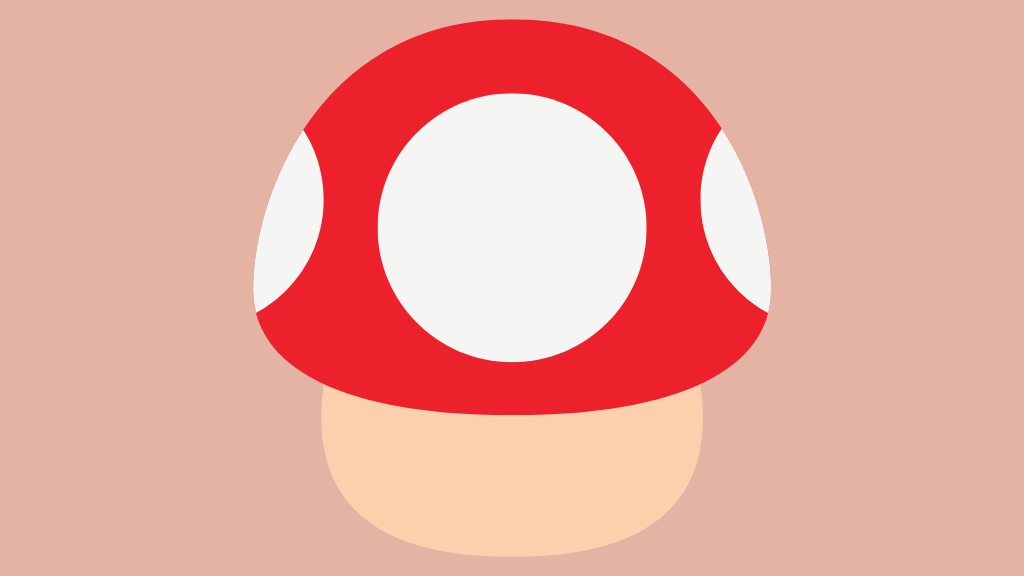
While the historical use of this mushroom adds to its allure, it also serves as a reminder of the importance of approaching its contemporary exploration with respect, caution, and a well-informed perspective.
Are Amanita Mushrooms Legal in the United States?
The legal status of Amanita muscaria mushrooms can be described as "technically legal" due to its complex and ambiguous regulatory standing in various jurisdictions.
The legality of Amanita muscaria varies from country to country and even within different states or provinces, making it challenging to provide a definitive answer.
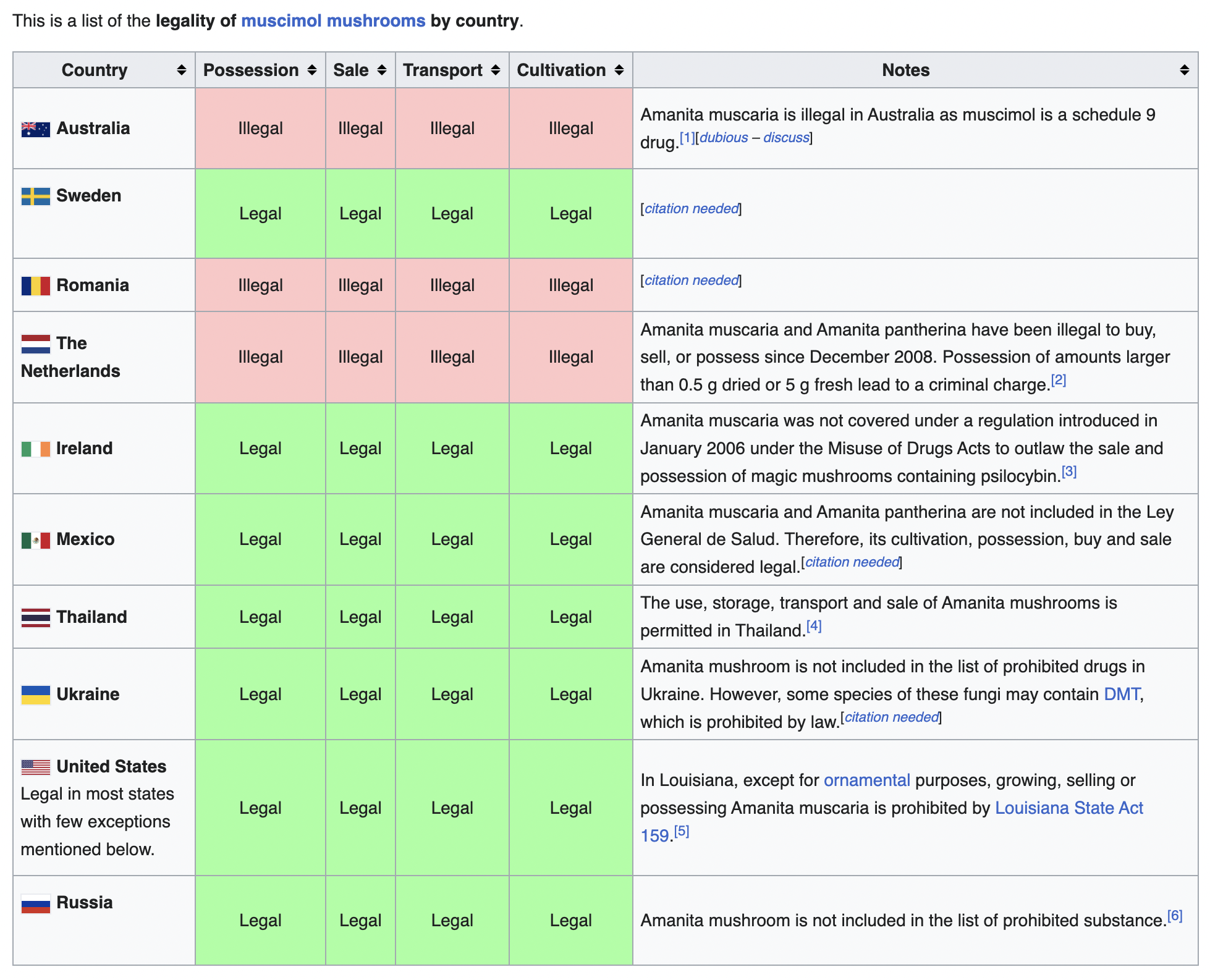
IMAGE SOURCE: Wikipedia
Why is Amanita Muscaria considered legal in some regions?
- Cultural and Historical Use: In some regions, Amanita muscaria has a long history of traditional use in indigenous shamanic practices and religious ceremonies. As a result, some countries may have cultural exemptions that allow for the traditional use of these mushrooms in specific contexts.
- Psychoactive Status: While Amanita muscaria does contain psychoactive compounds, primarily muscimol, it is not classified under the same category as some other well-known psychedelic substances. For instance, psilocybin-containing mushrooms (magic mushrooms) are explicitly classified as illegal in many places, but Amanita muscaria falls outside the scope of these specific laws.
- Chemical Composition: The primary psychoactive compound in Amanita muscaria, muscimol, is structurally different from substances classified as controlled drugs. As a result, it may not fall under existing laws or regulations that target specific chemical compounds.
- Lack of Abuse Potential: Amanita muscaria is generally considered less likely to be abused recreationally compared to other psychedelics like LSD or MDMA. Its use often involves traditional and ceremonial contexts rather than recreational or party settings.
- Ambiguous Identification: Identifying Amanita muscaria correctly can be challenging, and it closely resembles other toxic Amanita species. This confusion may lead to difficulties in enforcement and prosecution.
While some countries explicitly prohibit the possession, sale, or consumption of Amanita muscaria, others may have no specific laws addressing its status. In some cases, the mushrooms might be legal to possess but illegal to sell or vice versa. Moreover, some regions may have laws related to the harvesting of wild mushrooms in general, which could indirectly impact the legality of Amanita muscaria.
It is essential to emphasize that the "technically legal" status should not be interpreted as an endorsement or encouragement to use Amanita muscaria without proper consideration of its potential risks and responsible practices.
Legal status can change, and the possession or consumption of these mushrooms may still carry risks, including accidental ingestion of toxic look-alike species or unforeseen legal consequences.
Before engaging with Amanita muscaria or any other psychedelic substance, individuals should thoroughly research the specific laws and regulations applicable to their location and exercise caution and mindfulness in their explorations.
Are Amanita Muscaria Mushrooms Safe?
Amanita muscaria mushrooms, with their captivating appearance and intriguing psychoactive properties, have attracted the attention of both seasoned psychonauts and curious adventurers. However, it is essential to acknowledge that these mushrooms carry potential risks and toxic considerations that demand a cautious approach.
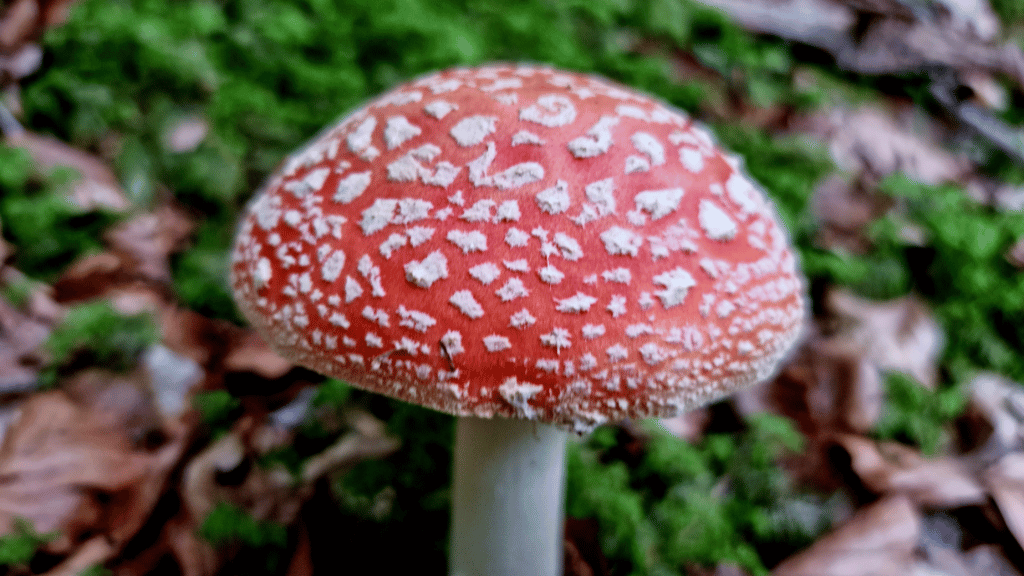
Understanding the chemical constituents of Amanita muscaria and adopting safety precautions is crucial for anyone considering their exploration.
Why is Amanita Muscaria considered toxic?
The primary psychoactive agents found in these enigmatic fungi are ibotenic acid and its derivative, muscimol. When ingested, ibotenic acid undergoes a chemical transformation to produce muscimol, which acts as a potent GABA-A receptor agonist, inducing altered states of consciousness.
Additionally, trace amounts of muscarine can be present in Amanita muscaria, contributing to cholinergic effects. As we delve into the toxic compounds present in these mushrooms, a deeper understanding of their potential risks and safety considerations emerges, prompting a responsible and informed approach to their exploration.
What are the compounds in Amanita Muscaria mushrooms?
- Ibotenic Acid: The primary psychoactive compound found in Amanita muscaria, ibotenic acid, is a prodrug. When ingested, it undergoes decarboxylation and transforms into muscimol, the main psychoactive agent responsible for the mushroom's effects.
- Muscimol: Upon conversion from ibotenic acid, muscimol acts as a potent GABA-A receptor agonist, leading to inhibitory effects on the central nervous system. These effects induce altered states of consciousness, including euphoria, hallucinations, and relaxation.
- Muscarine (Minor Compound): Amanita muscaria also contains trace amounts of muscarine, a compound that stimulates the parasympathetic nervous system, causing cholinergic symptoms such as increased salivation, sweating, and gastrointestinal distress.
What are the risks of taking amanita muscaria mushrooms?
There are many compounding factors that can contribute to the specific risk of individual mushrooms, individual sourcing, and individual humans. Here is a short summary of these potential risk factors:
- Variable Potency: The potency of Amanita muscaria mushrooms can vary significantly due to several factors, including the species of the mushroom and its growing conditions. Different Amanita species contain varying levels of psychoactive compounds, leading to unpredictable effects and potential dangers.
- Individual Sensitivity: Individual responses to Amanita muscaria can vary widely. Factors such as body weight, metabolism, and personal brain chemistry can influence how a person reacts to the mushroom's psychoactive compounds, making precise dosage control challenging.
- Adverse Reactions: Consuming Amanita muscaria can lead to various adverse reactions, especially at higher doses. These may include nausea, vomiting, delirium, confusion, and psychomotor impairment, which can pose risks to the user's well-being and safety.
- Toxicity of Raw Mushrooms: Consuming raw Amanita muscaria is not recommended due to the presence of ibotenic acid. Ibotenic acid can cause more pronounced toxic effects, including neurological symptoms, making it essential to properly prepare the mushrooms to reduce their toxicity.
Important harvesting and safety considerations
Never consume a mushroom you wild forage unless you're an expert. Amanita muscaria mushrooms should only be identified by experienced mycologists or foragers due to their close resemblance to toxic species. Misidentification could lead to severe health consequences. There are more than 600 known varieties of Amanita mushrooms. Only an expert can help you determine whether yours is the correct variation.
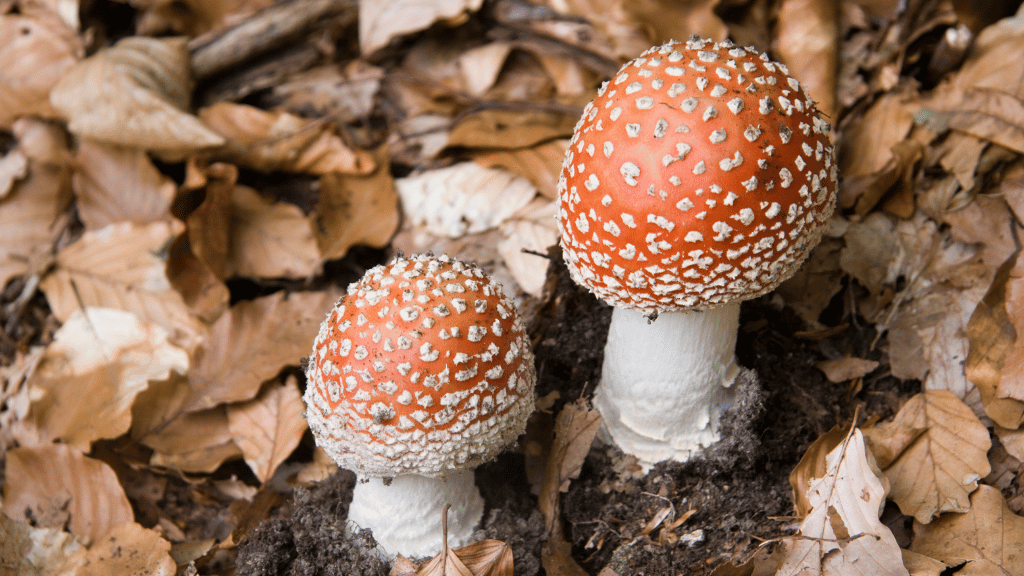
Unless one possesses expert knowledge in mycology, consuming wild-harvested Amanita muscaria should be avoided. Sourcing from reputable and knowledgeable suppliers is safer.
Properly drying and processing Amanita muscaria can convert the ibotenic acid to muscimol, reducing the overall toxicity of the mushrooms. We'll talk more about that next.
How to Properly Dry and Store Your Amanita Muscaria Mushrooms
Drying and processing play a crucial role in reducing the potential toxicity of Amanita muscaria mushrooms and enhancing the safety of their consumption. When freshly harvested, Amanita muscaria contains significant amounts of ibotenic acid, which can lead to pronounced toxic effects when ingested. However, through proper drying and processing, this toxicity can be significantly mitigated.
The process of decarboxylation
Decarboxylation is the chemical process that converts ibotenic acid into muscimol, the primary psychoactive compound responsible for Amanita muscaria's psychedelic effects. This process involves the removal of a carboxyl group from the ibotenic acid molecule. Heat is a critical factor in facilitating decarboxylation, making the proper drying of the mushrooms essential.
Proper Amanita drying techniques
When drying Amanita muscaria mushrooms, it is crucial to ensure that the process occurs slowly and at low temperatures to preserve the integrity of the active compounds. Rapid or high-temperature drying can degrade the psychoactive constituents and reduce the overall potency of the mushrooms.
Drying can be achieved by placing the mushrooms in a well-ventilated area at room temperature, away from direct sunlight or sources of heat. The process may take several days to a week, depending on environmental conditions and mushroom size. We have a complete guide to drying mushrooms here.
How to ensure adequate airflow
Proper airflow during the drying process is essential to prevent mold growth and to ensure uniform drying. If the mushrooms are left in a closed, humid environment, they can develop mold, which can produce harmful toxins and degrade the quality of the mushrooms.
How to store dried Amanita mushrooms
Once dried, it is essential to store the Amanita muscaria mushrooms in a cool, dry, and dark place to maintain their potency. Using airtight containers can help protect the mushrooms from exposure to moisture and air, preserving their psychoactive properties for a more extended period.
Cautionary Note
While decarboxylation through drying can significantly reduce ibotenic acid content and make Amanita muscaria mushrooms safer for consumption, it does not entirely eliminate potential risks. Individual reactions to muscimol can still vary, and excessive consumption can lead to adverse effects.
Therefore, even when properly dried, it is essential to approach the consumption of Amanita muscaria with moderation and mindfulness.
Commercially prepared Amanita mushrooms
Some suppliers offer processed Amanita muscaria products, such as extracts or capsules, which claim to have undergone proper drying and processing to reduce toxicity.
While these commercial preparations may provide more predictable dosing, it is essential to source them from reputable and trustworthy suppliers.
We recently had the opportunity to try Moonwlkr's Amanita Muscaria gummies and think they're a great choice for beginners. Their transparent sourcing, ingredients, and 3rd-party lab testing make them a trusted choice in an otherwise saturated, shady market.
Amanita Mushroom Gummies
In recent times, a new and creative way of consuming Amanita muscaria mushrooms has emerged: Amanita muscaria gummies.
These commercial gummy formulations offer a modern twist on traditional methods of ingesting the iconic mushroom and have garnered increasing popularity among those intrigued by the world of psychedelics.
Amanita gummies encapsulate the psychoactive properties of Amanita muscaria in a convenient, dose-controlled, and palatable form, attracting a broader audience interested in exploring altered states of consciousness.
What are Amanita muscaria gummies
Amanita gummies are edible products that contain concentrated extracts or processed Amanita muscaria mushrooms. Inspired by the well-established market of cannabis-infused gummies, these products have capitalized on the growing interest in alternative psychedelics and plant-based medicines.
The manufacturing process involves carefully drying and processing the mushrooms to convert ibotenic acid into muscimol, the psychoactive compound responsible for Amanita muscaria's effects.
The processed mushroom extract is then combined with gummy ingredients, such as gelatin or plant-based alternatives, to create bite-sized, easily consumable gummies.
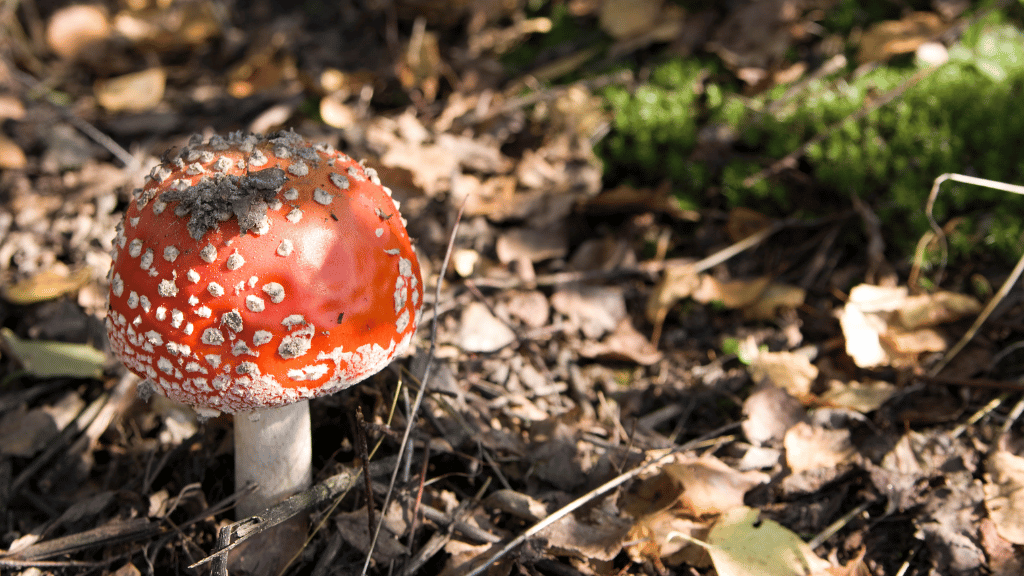
Why are Amanita Muscaria gummies so popular?
One of the primary reasons for the surging popularity of Amanita gummies is the convenience they offer. Unlike raw mushrooms that require careful drying and preparation, gummies are ready-to-consume, eliminating the need for extensive knowledge of mycology and ensuring a consistent dosage with each gummy.
This control over dosage provides users with a more predictable experience, reducing the risk of overconsumption or underwhelming effects.
Amanita muscaria mushrooms have a distinct and bitter taste that can be off-putting to some users. By encapsulating the psychoactive compounds in gummy form, manufacturers effectively mask the mushroom's natural flavor, making it more palatable for those who may have been deterred by the taste of raw mushrooms.
The allure and accessibility of Amanita Muscaria gummies
The growing interest in psychedelic substances and their potential therapeutic benefits has sparked curiosity among a diverse range of individuals. Amanita gummies offer a legal and accessible entry point for exploring alternative states of consciousness, attracting those who may be seeking novel experiences or are hesitant to experiment with more strictly regulated psychedelics.
Additionally, the association of Amanita muscaria with ancient shamanic traditions and cultural significance further adds to the allure of these gummies for spiritual and introspective exploration.
The rapidly-burgeoning market of psychedelic enthusiasts has paved the way for innovative products such as Amanita gummies.
Online platforms and niche retailers have made these products increasingly accessible, allowing curious individuals to experiment with Amanita muscaria in a controlled and safe manner.
The marketing of these gummies often emphasizes their natural and plant-based origins, aligning with the broader trend of seeking organic and holistic alternatives for wellness and self-discovery.
Are Amanita Muscaria Gummies Safe?
This is a loaded question and we strongly urge our readers to proceed with caution. There is little-to-no standardized regulation in the mushroom supplement or legal-psychedelics markets. Just because a company has great marketing doesn't mean it's making a thoughtful, safe, or sustainably sourced product.
While Amanita Muscaria gummies can offer convenience and dose control, they still contain psychoactive compounds that can lead to significant effects and potential risks. These gummies are NOT to be taken lightly.
As with any psychedelic substance, it is crucial to approach Amanita muscaria exploration with respect, mindfulness, and a well-researched understanding of its potential effects and safety considerations.
Even experienced psychedelic users might find that their bodies react completely differently to the varied psychedelic compounds in this kind of mushroom.
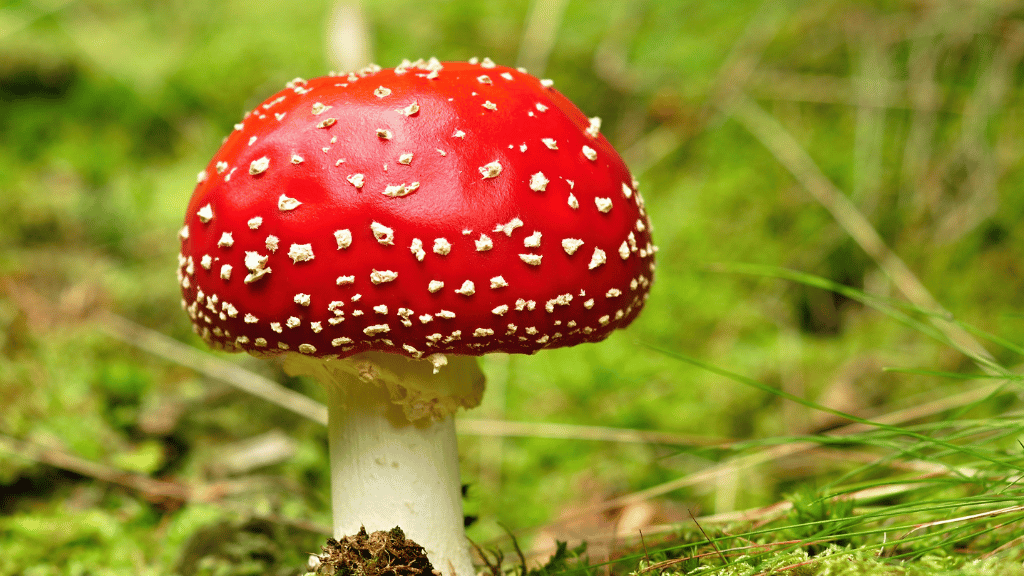
How Does Amanita Muscaria Compare to Psilocybin (Traditional Magic) Mushrooms
Many of our readers are wondering: What's the difference between an Amanita Muscaria gummy trip and a psilocybin gummy trip? What are the different compounds, effects, dosage considerations, and more?
Let's dive in!
Muscimol vs Psilocybin Chart
| Amanita Muscaria (Muscimol) | Psilocybin | |
| Psychoactive Compounds | The primary psychoactive compounds in Amanita muscaria are ibotenic acid and muscimol. Ibotenic acid is a prodrug that converts to muscimol upon ingestion. | Psilocybin mushrooms contain psilocybin, which converts to psilocin in the body. Psilocin is the primary psychoactive compound responsible for the effects of psilocybin mushrooms. |
| Onset and Duration | The effects of Amanita muscaria can take longer to onset compared to psilocybin mushrooms. It may take anywhere from 30 minutes to 2 hours to start feeling the effects, and the trip can last 4 to 10 hours or longer. | Psilocybin mushrooms typically have a faster onset, with effects starting within 20 to 60 minutes after ingestion. The trip usually lasts around 4 to 6 hours. |
| Nature of Effects: | Amanita muscaria trips are often described as dreamy, sedating, and relaxing. The effects can induce feelings of euphoria, altered perceptions, and a dream-like state. Users may experience visual distortions and vivid hallucinations, but these effects tend to be less intense and colorful than those of psilocybin mushrooms. | Psilocybin trips are often characterized by intense and colorful visual hallucinations, emotional introspection, and profound insights. Users may experience a greater sense of connectedness to nature, others, and the universe. The emotional and introspective aspects of a psilocybin trip can be more pronounced compared to Amanita muscaria. |
| Physical Effects | Amanita muscaria can cause physical sensations such as nausea, dizziness, and a lack of coordination. Some users may experience muscle relaxation and a sense of heaviness in the body. | Psilocybin mushrooms may also cause mild physical effects, such as increased heart rate, dilation of pupils, and changes in body temperature. |
| Mental State | Amanita muscaria trips are known for inducing a dreamy and sometimes drowsy mental state. Users may feel more introspective and contemplative, but the experience can also be unpredictable and delirious at higher doses. | Psilocybin trips often lead to heightened sensory perception, enhanced creativity, and deep emotional experiences. Users may gain insights into their thoughts and emotions and experience a sense of interconnectedness. |
| Dosage and Sensitivity | Amanita muscaria's effects can be highly dose-sensitive, with a fine line between a mild experience and an intense, potentially uncomfortable trip. The difference between a low and high dose can vary greatly, making precise dosage control challenging. | While psilocybin trips are also dose-sensitive, the range of dosages that produce manageable and meaningful experiences tends to be more predictable compared to Amanita muscaria. |
Remember, all of this will vary greatly depending on your sourcing, your experience, your body composition, your set and setting, and whether you have an experienced trip sitter to guide you.
Please use extreme caution when using any psychedelic substance!
The Complete Beginner's Guide to Trying Amanita Muscaria Gummies For the First Time
If you're considering exploring Amanita Muscaria gummies for the first time, it's essential to approach the experience with caution, mindfulness, and responsible practices. These gummies contain psychoactive compounds that can induce altered states of consciousness, so it's vital to be well-informed and prepared for the journey ahead.
Here's a step-by-step guide to help you navigate your first experience with Amanita Muscaria gummies:
1. Research and education:
Before trying Amanita Muscaria gummies, conduct thorough research about the mushroom, its history, effects, and potential risks. Familiarize yourself with the chemical composition, traditional use, and modern experiences shared by others.
2. Choose the right setting:
There are numerous sources where you can research the importance of set and setting before engaging in a psychedelic experience. In fact, this topic has been the subject of many research projects.
We really cannot emphasize enough the importance of selecting a safe, comfortable, and familiar environment for your first experience.
Surround yourself with trusted friends or a trip-sitter who can provide support and ensure your well-being throughout the journey. While you may want to experience your trip alone, you need to reconsider the importance of having someone a room away should you need medical, emotional, or physical support during your experience.
You might consider hiring a professional trip-sitter for your first experience if you're looking for a deeper spiritual and mindful experience. We've actually met with the owners of this incredible company and feel strongly that they'd be a trusted resource for you if you want to learn more about designing and getting the most from your psychedelic experience.
3. Obtain quality products:
Source your Amanita Muscaria gummies from reputable and trustworthy suppliers to ensure the purity and potency of the product. Avoid consuming wild-harvested mushrooms, as proper processing is essential for safety.
Once again: avoid just taking that mushroom you found on your walk! Don't do it!
When it comes to quality Amanita muscaria gummy products you should look for:
- A trusted brand
- Third-party lab testing for quality, dosage, toxic chemicals, and more
- Transparency about mushroom sourcing and manufacturing
- Additional ingredients
- Product reviews
We had the honor of speaking with the founders of Moonwlkr recently so that we could try their lab-tested Amanita Muscaria gummies and found them to be an excellent choice for beginners. We highly recommend starting with a half gummy.
Which leads us to...
4. Start with a low dose
Since individual sensitivity can vary significantly, begin with a low dose of Amanita Muscaria gummies. Even though they offer dose control, it's crucial to ease into the experience to gauge how your body and mind respond.
But what does a low dose mean?
Dosage is a tricky conversation, as so much of your dosage will depend on the quality of the mushroom extract, the extract method, the drying process, added ingredients, and how the product itself is packaged and dosed. Always refer to your package details for more information.
In general, a single gummy usually contains 1,000mg of Amanita Muscaria extract. This is more than enough to give you a solid trip, depending on those unique factors. We don't recommend increasing your dosage beyond that unless you're a highly-experienced explorer and have a trip-sitter with you.
A half (or quarter) gummy is more than enough for a beginner. You can store the rest of your gummy in the fridge or freezer.
5. Set your trip intentions
Set clear intentions for your experience. Whether it's for introspection, self-discovery, or spiritual exploration, having a purpose can provide a meaningful and focused journey.
According to PsychedelicPassage.com, "An intention serves as an anchoring point for your journey. Throughout your ceremony, there may be instances where you feel stuck, scattered, or outright scared. In these moments, referring to our intention is a gentle reminder that there’s a meaningful purpose to this temporary experience. An intention grounds us and provides direction."
If you want to learn more about trip intentions, check out their complete guide here.
6. Eat mindfully
Some people choose to consume Amanita Muscaria gummies on an empty stomach to optimize their effects. But if you have a sensitive stomach or have reacted poorly to other psychedelic substances, you may want to eat something bland and filling beforehand.
Remember that the onset of effects can take some time, so be patient and avoid consuming more gummies too quickly.
7. Surrender to the experience
As the effects begin to unfold, surrender to the experience and allow yourself to embrace the journey. Let go of any expectations and trust the process as it unfolds.
Throughout the experience, practice self-awareness and stay attuned to your thoughts and emotions. If you encounter challenging emotions or sensations, acknowledge them without judgment and let them pass.
Your trip-sitter can help remind you that you're safe in your body and space.
9. Stay hydrated and nourished
Keep yourself hydrated with water and have some light, healthy snacks available if you feel the need to eat. However, we highly recommend avoiding heavy or greasy foods during the experience.
10. Integration and reflection
After the effects have subsided, take some time for reflection and integration. Journaling or discussing the experience with trusted friends can help you gain insights and process the journey.
11. Plan for aftercare
Consider dedicating the following day to rest, self-care, and integration. Avoid making significant decisions or engaging in demanding activities until you feel fully grounded. Many people report feeling exhausted after their experience, so it's best to plan accordingly.
12. Embrace a respectful and mindful approach
Remember that Amanita Muscaria gummies are potent and deserve respect. Approach the experience with mindfulness and an attitude of reverence towards the mushroom and its potential effects.
We hope you found this article helpful! Want to receive more great content like this? Join our rapidly growing list of subscribers today.

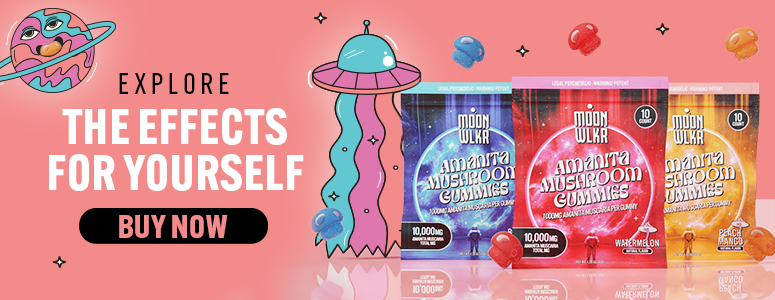
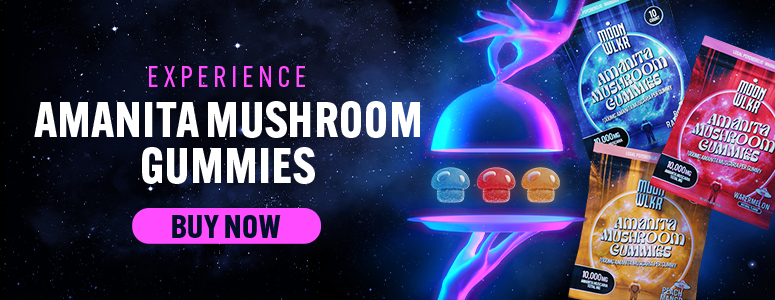
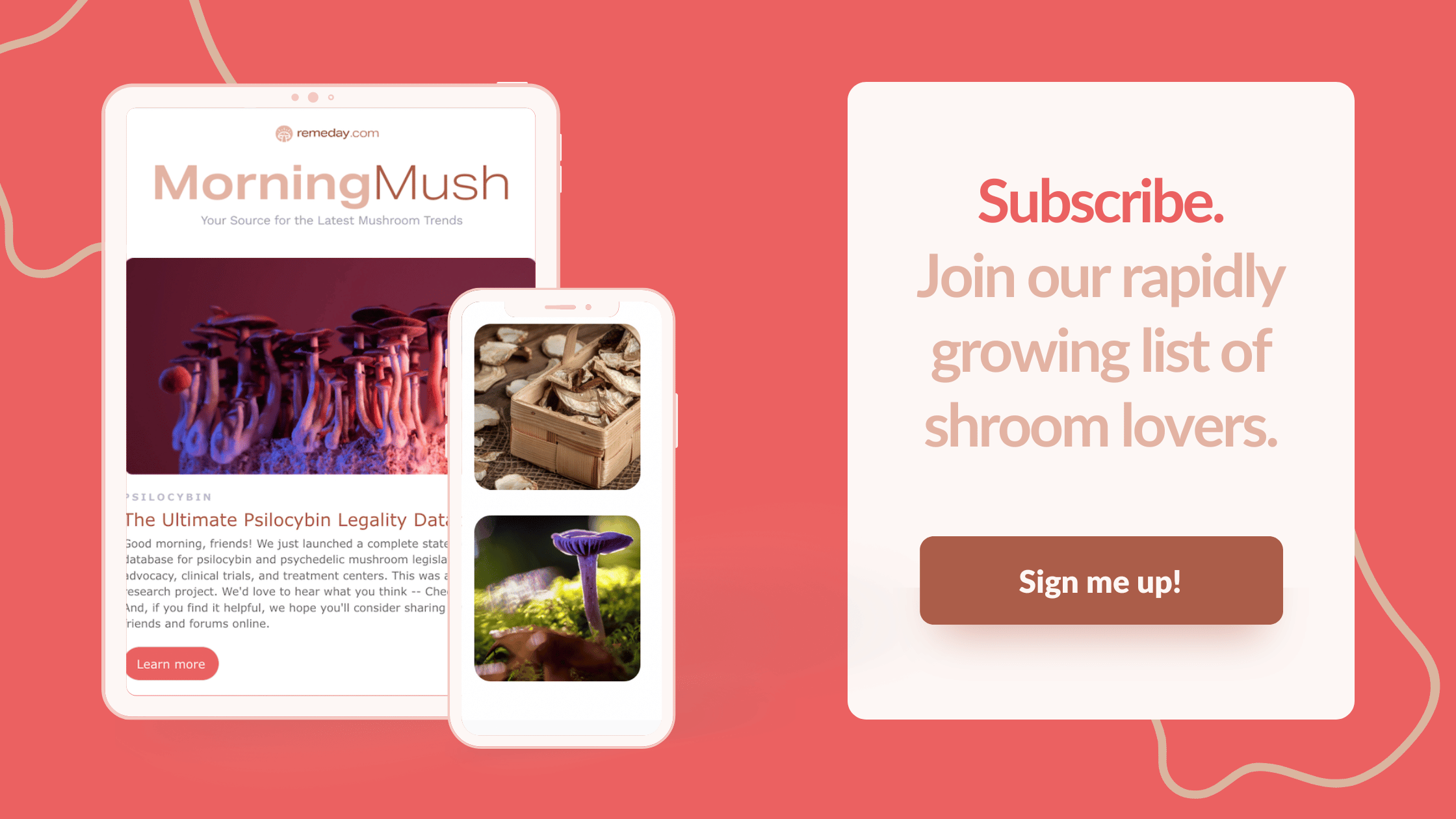
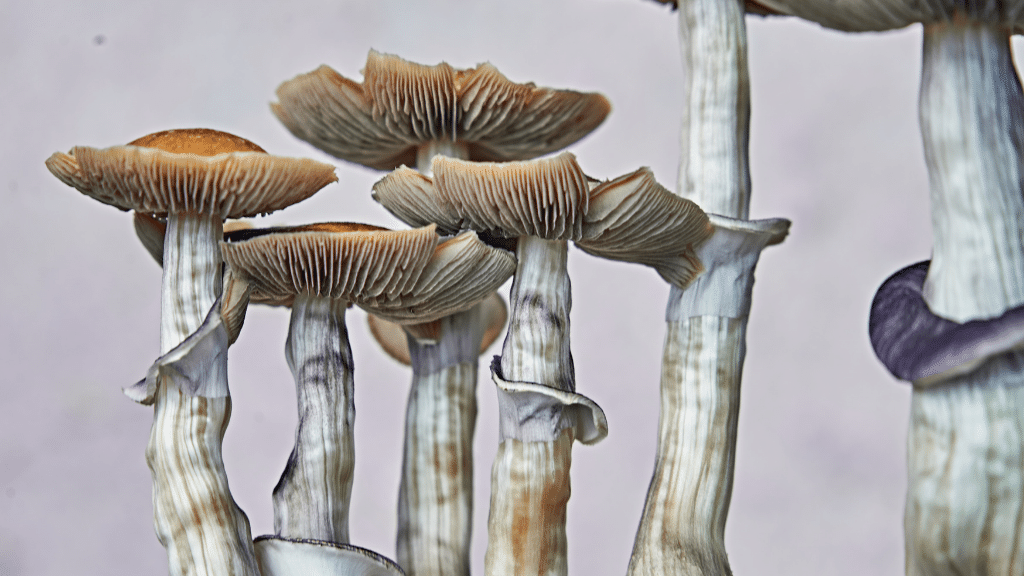
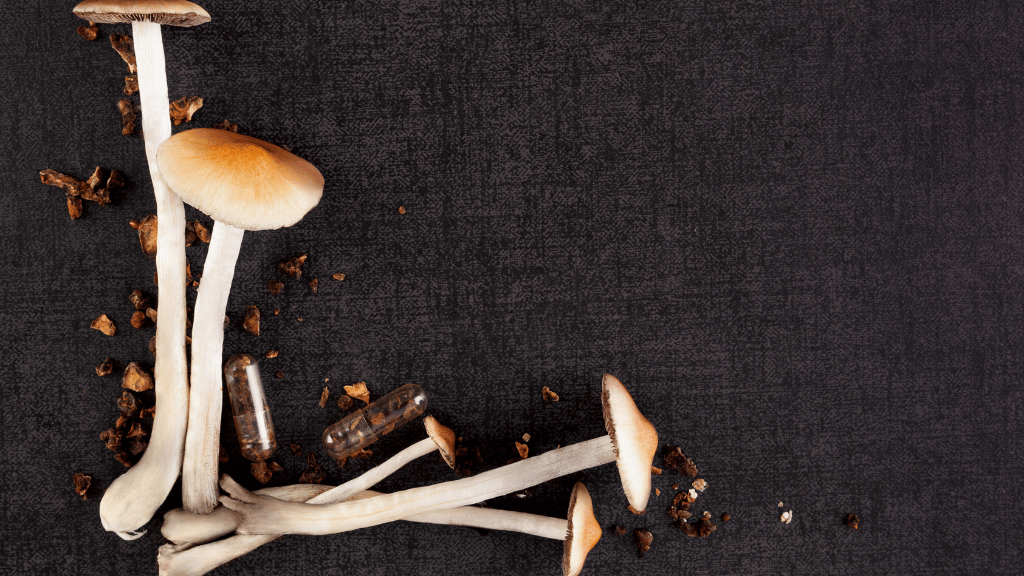


.png)
